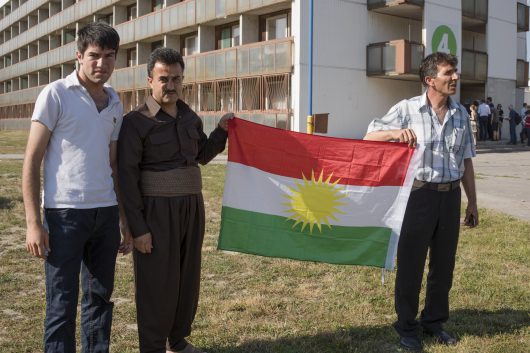Ten Facts About Refugees in Slovakia

Over the past several months, the influx of migrants in Europe has notoriously prompted headlines about the manageability of refugees and illegal immigrants on the continent. To explore the details about one country in particular, here are 10 facts about refugees in Slovakia:
- As of 2015, the foreign population in Slovakia is about 1.56 percent of the total population, numbering approximately 84 thousand people. This is one of the lowest rates in the entire European Union.
- Rates of migration are dramatically rising since Slovakia’s admission into the EU in 2004. The total number of foreign-born residents has quadrupled and continues to increase by approximately 8,000 new arrivals each year.
- The highest percentage of new migrants originate from Ukraine and nearly half come from Slovakia’s bordering countries, also including Poland, Hungary, Austria and the Czech Republic. Outside the EU, the largest populations represented are from Iraq, Afghanistan, Serbia, Russia, Vietnam, China and Syria.
- The most commonly reported reason for applicants seeking to relocate to Slovakia is for work. As for arranged arrivals, they typically utilize refugee camps in Slovakia as a backup when neighboring camps, often in Austria, face added strain.
- Numerous politicians in the country sparked controversy in 2015 with public statements regarding how Slovakia would only accept Christian refugees: “We could take in 800 Muslims but we don’t have any mosques in Slovakia, so how can Muslims be integrated if they are not going to like it here?” Many leaders retain the political belief that Slovakia is happy to help as a transit country but do not intend to house refugees in Slovakia as a final destination.
- Slovakia’s political stance is also in disagreement with many of their EU partners. Last year, a Syrian refugee relocation referendum was passed and originally arranged for Slovakia to take on a mere 1,000 out of 40,000 new refugees. However, Slovakia was one of only four countries to vote against the agreement, eventually conceding to 200.
- Socially, Slovakian citizens also oppose new refugees. Frequent marches and demonstrations against the perceived ‘Islamization of Slovakia’ are known to occur. As another example, the townspeople of Gabčíkovo, home to a major camp in the country, voted with a 97 percent majority to disallow fresh entrants because they value the culturally homogenous history of the country.
- Refugees in Slovakia are aware of the backlash as well, and reportedly often arrive in the country dissatisfied. In this respect, the views of the refugees are consistent with that of the government – Slovakia is meant to be a transit country on the path to Western Europe or the United States.
- According to the United Nations High Commissioner for Refugees (UNHCR), formal legal regulations are also lacking regarding the status of many refugees. Slovakia does not have an established legal framework to define statelessness or people in flight, and there are also some difficulties with establishing dual citizenship. However, the UNHCR is also helping to overcome some of these barriers by sponsoring training programs and establishing assessment mechanisms.
- In addition to the camp in Gabčíkovo mentioned above, other major refugee camps are located in Rohovce and Humenné. Often such camps were originally intended to be temporary shelters during certain international crises but were later extended or reopened after prolonged instability. These areas are all near Slovakia’s borders with Hungary and Ukraine.
As a relatively poorer nation of Eastern Europe, Slovakia’s concerns for accommodating a large number of migrants socially and economically may prevail, but it is important to also ensure that refugees in Slovakia are welcomed to the highest possible degree. As the UNHCR rhetoric reiterates, Slovakia’s cooperation with resettlement arrangements is greatly needed for the most vulnerable citizens around the world.
– Zachary Machuga
Photo: Flickr
